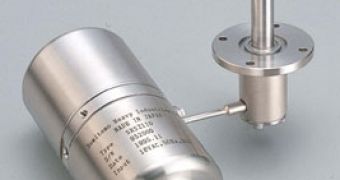If you know how the cooling cycle of a typical refrigeration system works, then you probably already know what a Stirling machine, or a Stirling cooler, is. University of Twente has just developed a miniature Stirling cooler, roughly three times the size of a sugar cube, able to cool micro-electronics to temperatures up to 80 Kelvin in the smallest amount of time possible in relation to other cooling solutions currently available.
For now however, miniature Stirling coolers are not efficient enough to cool some of the most critical components of electronic computers, the microprocessors. Stirling machines have been invented in the 19th century by Scottish reverend Dr. Robert Stirling, and basically work by compressing a gas inside a cylinder, then expanding it into a second cylinder, thus cooling the gas in order to dissipate heat.
Piezoelectric piston
The new device created by Srinivas Vanapalli from the University of Twente uses as compression piston a thin membrane, oscillating between two positions at frequencies up to 1 kilo-Hertz, or 1,000 cycles per second. The working gas is helium. Traditional Stirling machines have the capability of completing only 60 cycles per second, meaning that they require long periods of time before bringing the cooled equipment to the same temperature.
According to Vanapalli, the greatest advantage of his device is that it is much smaller and more efficient than any previous Stirling cooler. "The goal is to make the cooling system 2 to 3 centimeters cubed, about the size of sugar cube," says Vanapalli. The membrane is constructed out of piezoelectric material, thus by pumping electrical current into it, it will start to vibrate, compressing and expanding helium. By doing so, one end of the cylinder is cooled, while the other heats up and dissipates thermal energy into the surrounding medium.
"There isn't anything like this commercially available today. Most coolers take 45 minutes to an hour; this is near-instant 80 Kelvin cooling," says Michael Lewis from the National Institute of Standards and Technology who developed last year, with the help of Vanapalli, a roughly similar device operating at 120 Hertz.
Space sensors cooling
Although extremely efficient for equipment in space, the new Stirling cooler is quickly overpowered when it comes to computer processors, due to the high amount of heat given off by such devices. "If there is a sensor in space that needs very rapid cooling without a lot of machinery this could do that," however cooling high-powered computing chips is out of the question, says Satish Kandlikar from the Rochester Institute of Technology.

 14 DAY TRIAL //
14 DAY TRIAL //